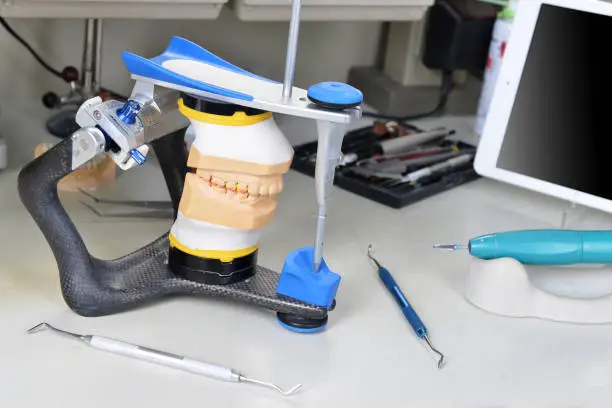10 Ways How Regular Maintenance Boosts Home Energy Efficiency
Homeowners residing in San Antonio, TX, know the struggle of keeping their homes comfortable year-round. Summers are long and hot, winters can bring sudden chills, and energy bills often reflect the heavy use of heating and cooling systems. That’s why home energy efficiency has evolved to be a necessity rather than just a trendy option. An efficient home means lower utility costs, improved comfort, and a lighter impact on the environment.
One of the most effective ways to boost energy efficiency is through regular maintenance. Small, consistent steps, like cleaning filters or scheduling professional check-ups, can make a noticeable difference. Over time, these habits don’t just reduce energy waste but also extend the lifespan of your home’s major systems. Let’s take a closer look at ten ways regular maintenance can help San Antonio homeowners save money and stay comfortable.
1. HVAC Tune-Ups
Your heating and cooling system is one of the biggest energy users in your home. Without regular maintenance, it has to work harder than necessary, leading to higher bills and uneven comfort. Scheduling seasonal HVAC tune-ups ensures the system is running smoothly and efficiently.
A typical tune-up includes checking the thermostat, cleaning or replacing filters, inspecting ducts, and making sure all parts are working as they should. Even something as simple as replacing a clogged filter can improve airflow, lower energy consumption, and make your indoor environment more comfortable.
2. Furnace Maintenance
When colder weather hits, a well-maintained furnace keeps your home warm without draining your wallet. Annual furnace inspections allow technicians to catch small issues, like worn parts, clogged vents, or poor airflow, before they become costly breakdowns. A neglected furnace not only uses more energy but also poses safety risks, such as carbon monoxide leaks.
If your utility bills are spiking and you suspect your furnace to be the culprit, reaching out to a reliable team of professionals for furnace repair & replacement in San Antonio might be the ideal option.
3. Air Conditioner Servicing
If there’s one system homeowners rely on the most, it’s their air conditioner. With scorching summer temperatures, your AC can quickly become the biggest contributor to your energy bills. Regular servicing keeps your unit from working overtime. Maintenance typically includes cleaning condenser coils, checking refrigerant levels, and inspecting ductwork for leaks. Dirty coils and low refrigerant force the AC to run longer and harder, driving up electricity costs.
4. Insulation Checks
Good insulation is the backbone of an energy-efficient home. Without it, cool air escapes in summer and warm air leaks out in winter, leaving your HVAC system struggling to keep up. Over time, insulation can shift, settle, or deteriorate, creating gaps that let energy slip through the cracks. Inspecting insulation in key areas like the attic, walls, and crawl spaces is an easy maintenance step that delivers huge returns. Adding or replacing insulation where needed helps keep indoor temperatures stable, reduces strain on HVAC systems, and prevents wasted energy.
5. Sealing Air Leaks
Air leaks may seem small, but they can cause big energy losses. Gaps around windows, doors, vents, and even light fixtures allow conditioned air to escape, forcing your heating and cooling systems to work harder. Sealing these leaks is a simple, low-cost maintenance task that can have a noticeable impact on efficiency. Weatherstripping, caulking, and foam sealants are quick fixes that homeowners can handle on their own. For larger leaks or ductwork issues, a professional can help identify and seal hidden problem areas.
6. Water Heater Care
Your water heater is one of the most overlooked appliances when it comes to maintenance, yet it plays a big role in your energy bills. Heating water accounts for a significant portion of household energy use, especially in larger families. Over time, sediment builds up inside the tank, making the heater work harder to deliver the same results.
Flushing the tank annually helps remove this buildup, improving efficiency and extending the life of the unit. Adding insulation around the tank and pipes is another simple step to reduce heat loss. Checking for leaks and monitoring the thermostat setting (ideally around 120°F) also ensures your heater runs efficiently. For long-term savings, consider upgrading to a tankless or high-efficiency water heater, which uses less energy and provides hot water on demand.
7. Appliance Maintenance
Everyday appliances like refrigerators, dishwashers, and dryers may not seem like energy hogs, but when they’re neglected, they can waste a surprising amount of electricity. A refrigerator with dusty condenser coils, for example, has to work harder to stay cool, while a dryer with a clogged vent takes longer to dry clothes, using more energy.
Simple maintenance tasks, like cleaning coils, checking door seals, and unclogging vents, help appliances run smoothly and efficiently. Regular servicing not only saves on energy costs but also extends the lifespan of these machines. Considering that modern appliances are built to last a decade or more, a little care goes a long way in avoiding unnecessary replacements.
8. Electrical System Checks
Your home’s electrical system has a direct impact on energy efficiency. Faulty wiring, overloaded circuits, or outdated breaker panels can waste energy and even pose safety hazards. Scheduling routine inspections ensures your wiring and panels are in good condition. Electricians can identify areas where energy is being lost or circuits are being overworked. Upgrades like energy-efficient lighting, grounded outlets, and surge protection improve both safety and efficiency.
9. Smart Home Devices
Technology offers homeowners new tools to maximize efficiency, and smart devices are at the top of the list. A programmable thermostat, for example, can automatically adjust your heating and cooling based on your schedule, saving energy when you’re not home. Smart plugs, lighting systems, and energy monitors also allow you to track and reduce unnecessary usage. These upgrades work best when paired with regular maintenance. They give you more control over your energy use while adding convenience to your daily life.
10. Professional Inspections
While DIY maintenance goes a long way, nothing replaces the expertise of a professional. Annual or bi-annual inspections help uncover hidden issues that homeowners might miss. Professionals use specialized tools to detect duct leaks, insulation gaps, and inefficient systems that drive up energy costs.
These inspections often pay for themselves through the savings they generate. If you can address these issues before they escalate, you can extend the life of your home’s systems. In cities, where energy demand can be high for much of the year, professional maintenance is an investment in both comfort and long-term savings. The good news? Most of these steps are simple, affordable, and can be done on a regular schedule.







